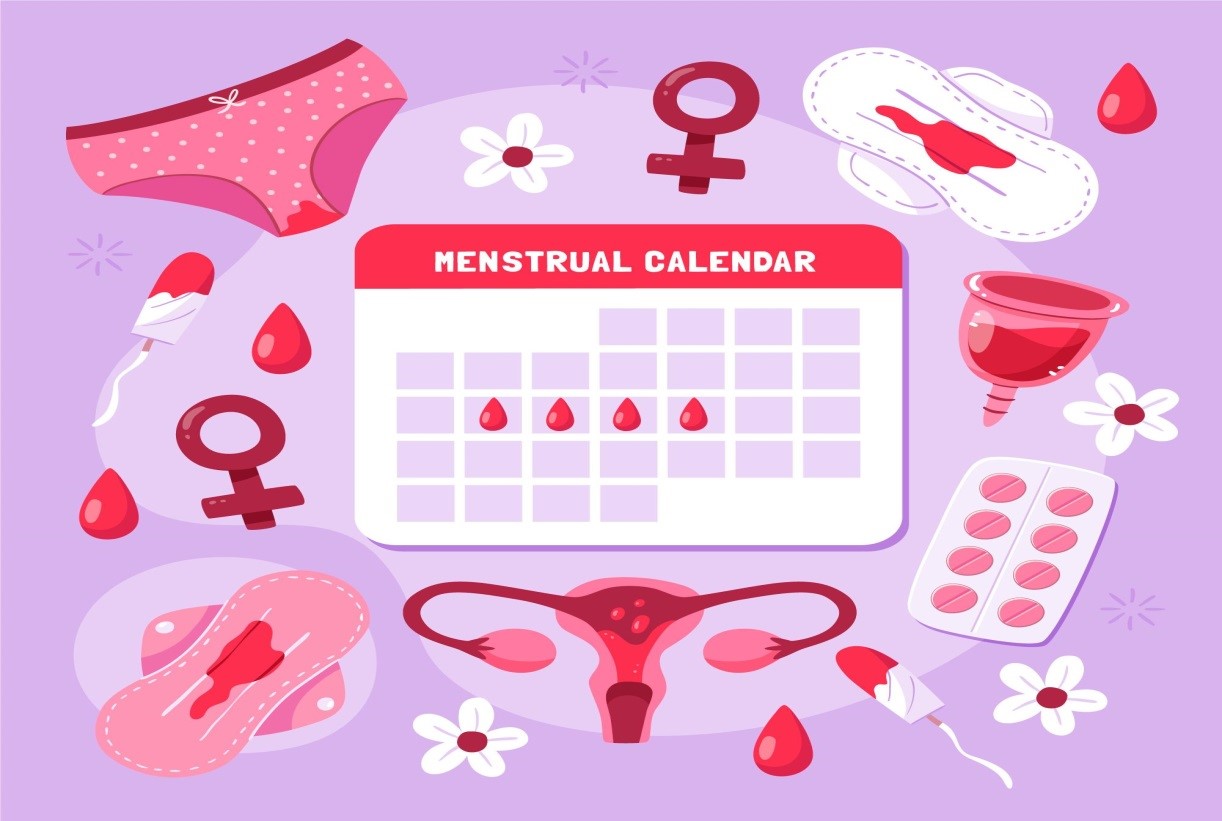The issue of climate change has been a hot topic that has been on for some time now. The issue of climate change and the impact it has on the environment, both locally and globally, has received a lot of attention. However, we often overlook the impact climate change has on menstrual health. The climate crisis has an indirect but profound effect on how people menstruate, and it is time to take a closer look.
Climate change is causing temperatures to rise worldwide, leading to an increase in natural disasters such as floods, droughts, and hurricanes. Consequently, access to clean water has become a challenge for many women. According to the World Health Organization, poor menstrual hygiene practices, which often stem from limited access to clean water, can lead to infections, reproductive tract infections, and cervical cancer.

Climate change is affecting the availability of clean water, making it harder for many women to maintain their hygiene during their menstrual cycles. Women and girls in impoverished regions are particularly affected, as they have limited access to safe and clean water sources.
In addition to poor menstrual hygiene, climate change has also caused a rise in the prevalence of pests such as mosquitoes, leading to an increase in mosquito-borne diseases. Many of these diseases can have adverse effects on the menstrual cycle of an individual. For instance, Malaria, a disease caused by mosquito bites, can lead to anemia, which can cause irregular periods, including skipped periods. Additionally, other mosquito-borne diseases like Zika and Chikungunya can also cause menstrual cycle irregularities, delaying menstruation or leading to heavier periods.
The high temperatures caused by climate change affect the body's hormonal balance, leading to a disrupted menstrual cycle. High temperatures have been shown to raise the body's core temperatures, which can negatively affect the production of hormones like estrogen and progesterone, thereby leading to a disrupted menstrual cycle. Women living in areas with extremely hot temperatures have been shown to experience menstrual disorders like amenorrhea, irregular periods, and delayed periods.
Moreover, the availability and access to healthy food sources have been affected by climate change. Food insecurity, which is prevalent in many parts of Africa and Asia, can affect menstrual health. Some girls and women in these regions may not have access to healthy food sources, leading to malnourishment and, consequently, disrupted menstrual cycles. For instance, Zinc is a vital mineral that helps regulate the menstrual cycle, and a deficiency in Zinc can cause menstrual cycle irregularities.
As the climate crisis persists, it has become increasingly difficult for people in many regions to access health care services. Women who may need medical attention due to menstrual cycle irregularities may not be able to access healthcare services due to the high cost or lack of healthcare facilities. This situation can have serious implications, as undiagnosed conditions can lead to more severe reproductive health problems in the long term.
Climate change has also led to the destruction of natural habitats, which are essential for the growth of medicinal plants used to manage menstrual health. For instance, medicinal plants like Cramp bark and ginger, which are used to treat menstrual cramps, and Chamomile and valerian used to manage stress and anxiety, are being threatened by climate change. This situation poses a challenge to individuals who may wish to use natural remedies due to financial constraints or lack of access to modern drugs.
Climate change also poses a mental health challenge to women globally. The unpredictability of the weather, natural disasters, and other climate-induced challenges can lead to stress and anxiety, which can negatively impact menstrual health. Research shows that mental stress can cause menstrual irregularities like changes in the menstrual flow, painful periods, and missed periods. Mental health, therefore, plays a crucial role in maintaining menstrual health, and climate change negatively affects both.
Climate change also affects the way menstrual products are produced, manufactured, and transported. The manufacturing process of menstrual products, such as sanitary pads, emits greenhouse gases that contribute to climate change. The massive production and transportation of these products affect the environment negatively. Sustainable menstrual hygiene solutions, such as menstrual cups and cloth pads, are more environmentally friendly options. Nonetheless, these options may not be readily available to women living in impoverished regions.
Finally, climate change affects the lives of girls and women living in vulnerable and marginalized communities. Girls from such communities may drop out of school due to the absence of basic infrastructure like toilets and clean water sources in schools. When girls drop out of school, it affects their education, employment opportunities, and, consequently, their lifestyle.
Overall, the impact of climate change on women and girls cannot be ignored. It is crucial to prioritize their needs and ensure that they have access to necessities like education, healthcare, and clean water. By doing so, we can empower them to become agents of change in their communities and help mitigate the effects of climate change. It is time to take action and work towards a more equitable and sustainable future for all.
Visit Our Shop For Various Healthcare Products